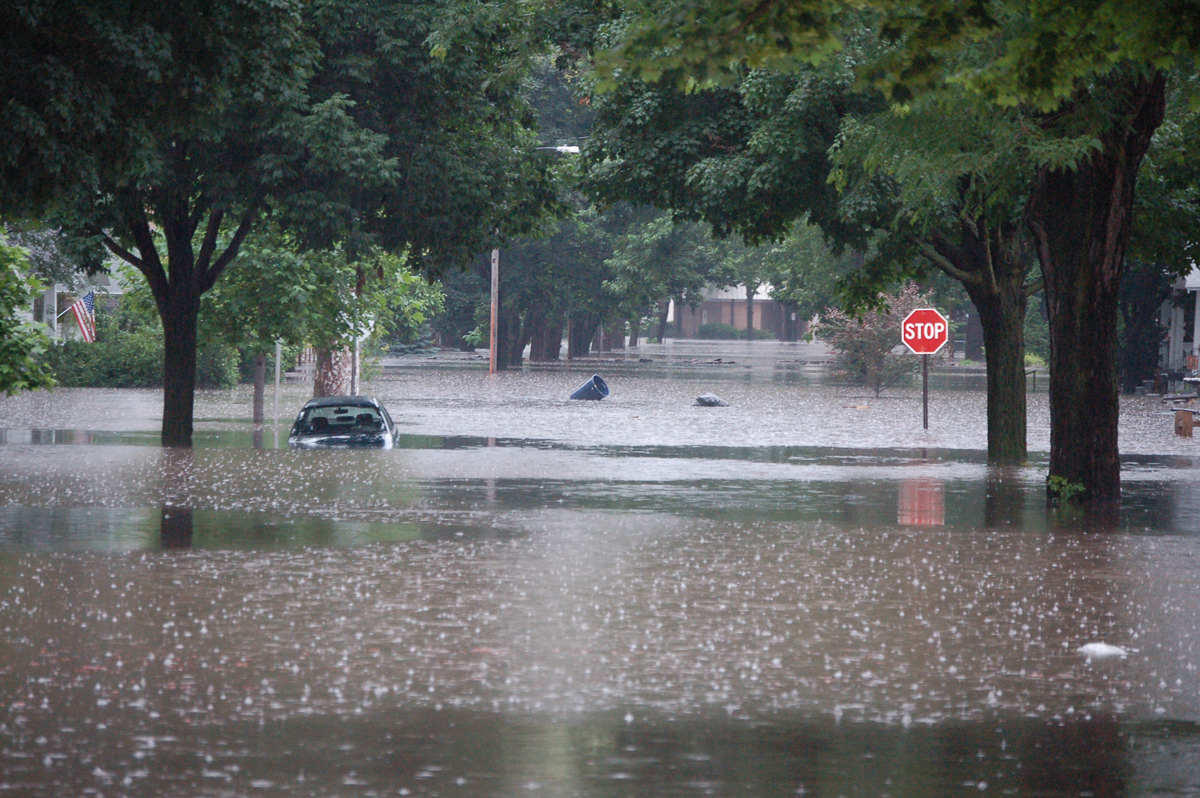We are faced with daily predictions of ‘the end.’ It is disturbing,
ineluctable, inescapable, unavoidable: 5-6
feet of hail in Guadalajara in June (NPR); melting of ice sheets
and predicted rise in ocean levels (IMBIE Team, 2018); record flooding
in the Midwest US (Scientific American 26 June 2019); and coastal states
like Florida soon to be “wiped
off the map” by sea level rise (The Guardian, 26 June 2018). The Climate Crisis
is disaster written on a global scale. It will be “Mad Max,” “The Hunger Games,”
and “Fear the Walking Dead” without the zombies.
It’s the end of life – but not really. As one botanist put
it to me, it might be the end of our species, but not of life on the planet.[1] And the end of life as we
know it does not mean the end of humanity.
Agency & Structure in the South Pacific
Intellectually, understanding the crisis plays into much of what I’ve thought about for the past decades as an anthropologist. One is the interplay between structure/agency. We are all part of cultural, political, economic, and environmental systems that we have little immediate control over. That is, we’re deeply embedded in and subject to those systems. Taken from the perspective of systems, humans as individuals or small social groups appear to have little or limited power. Yet clearly humans take actions as if we do have power. As I’ve been discussing in my work on the drug wars and international development, one way to think of this is as a topography of power – we have power within specific domains but not others. We can fight patriarchy in our own workplace (and on Twitter!) but does that change the system as the whole?
Here, I’ll veer off a bit to explain how I came to this
interest. In the 1980s, I did research on infant feeding and weaning in
response to the ‘breast is best’ anti-Nestlé campaign.[2] The goal of our research group[3] was to add in ethnographic
detail to sweeping statements made in the campaign about breast-feeding in
non-Western, non-state systems, which overwhelmingly romanticized
breast-feeding as ‘natural.’ The campaign Orientalized/Othered these mothers in
under-developed countries, depicting them as dupes of a big corporation; women
with no agency, no strategies, no comprehension or ideal futures of their own.
Breastfeeding was romanticized as a spiritual connection between mother and
baby that continued for 3-4 years. Women were depicted as Mothers of Infants,
rather than people who fed their entire families through their labor, cared for other
children and family members, and did not lie around a hut with a baby attached
to their breast all day!
What I and other researchers found is that infant care and
feeding are diverse and culturally constructed. In the context of their own
culturally constructed roles as women, ‘isolated,’ ‘primitive’ mothers made
decisions for themselves. They were not victims who simply fell prey to Western
advertising and propaganda.[4]
My work showed that mothers supplemented infants’ diet with solid foods from almost the first day of birth, due to the cultural belief that no human could live without a staple such as taro or sweet potato. Caretakers pre-masticated staples and spit them into the baby’s mouth, who was then given the breast to suckle (infants can’t swallow without suckling at this stage).[5] This practice was also utilitarian. When women returned to everyday life after a ritually enforced “baby-moon,” the mother could safely leave her infant with another woman a couple of times a week while she worked in her gardens to feed herself and the rest of the family; if the baby was hungry, anyone could pre-masticate food, spit it in the baby’s mouth, and then give the baby a breast or finger to suck so that the infant swallowed. In short, this early supplementation was the strategy of women who were not only mothers, but the main food providers for their families. In this context, the idea of a baby bottle was attractive; they filled it with breast milk or water to help feed their infants when mothers were working in their fields. Having discovered this new technology, women sometimes asked their husbands or brothers to buy bottles for them when the men were in town. Formula was rarely if ever used; there were no local stores to carry it. When used, it was a treat, not a staple.
In short, these women were perfectly capable of observation, of
looking for innovative and practical solutions to everyday problems they faced,
of experimentation, and of adaptation based on those observations. Women were
active agents in their own complex lives. Like all other humans, they
experienced multiple, sometimes conflicting, obligations. New technologies
offered them new ways of dealing with long-standing problems. They were also
part of a cultural system – as are we all. This cultural system valued women as
productive farmers as well as mothers and the sustainers of the patrilineage of
their husbands and guardians of ritual systems.
Climate Crisis & Agency – Disrupting Understandings of How We Live
How does this relate to the Climate Crisis and how to teach
it? It taught me that people strategize, whatever the limits. I cannot take a
materialist position that people are victims of a system, no matter how
terrible their living conditions (Clint, Texas; Cox’s Bazaar, Bangladesh; Moria,
Greece; Bidi Bidi, Uganda; Nauru Regional Processing Center for Australia), humans
strategize (or tacticize![6]) to get what they need or
want. We all attempt to understand our options, even if our understanding of possibilities
is shaped, constructed, and limited by the cultural and political systems in
which we exist.
This is the core of anthropology, to understand both the constraints
of political / economic systems, and to see beyond the blinders of culture, the
ways in which enculturation shapes the possibilities we assume are available to
us, the generative principles of how we make sense of the world. Studying
others is an ethical choice to attempt to truly understand others in their own
terms, to take people’s accounts of themselves seriously. Another consequence
is that in this work of understanding, we begin to understand our own blinders,
to ‘see’ the core principles of our own culture – that which we assume, never
question, and think of as natural and therefore typical of all humanity. Understanding
these core principles of our own culture and our historically constructed
political economy allows us to begin to recognize other ways of being in the
world. To comprehend this, we needed to continuously explore that relationship
between individual action and larger systems.
This class was designed to show students that the end of
life as we know it isn’t the end of life. I needed to disrupt students’
understanding of ways that humans can live. This means questioning the
idea of the tragedy of the commons and lifeboat ethics; individual autonomy as
the zenith of freedom; the inherent selfishness of all humans; the assumption
of Homo economicus and profit or surplus seeking as a main motivator for
human behaviors. All of these are congruent with the culture of dominant groups
in post WWII American society, but they are not universal.
What other ways, then, can we live?
Rupture & Collapse
The first step was to disrupt the idea of collapse. I did
this introducing the concept of ‘rupture.’ We read portions of Sing Chew’s
(2008) “Ecological
Futures: What History Can Teach Us,” specifically the Preface, the
Introduction, and the Conclusion (the section on “Hope in a hopeless world,”
pp. 139142). We also read Lund (2016), “Rule and rupture: State formation
through the production of property and citizenship,” (For an overview of Lund’s
current work, see “Rule and
Rupture.”)
And that will probably, at last, be my next post. I’m still working on it and this is more than long enough!
[1]
And, of course, cockroaches will continue. Anyone who has lived in a
cockroach-heavy environment (Hawaii, for instance) knows that cockroaches are
ineradicable. They survive in office microwaves!
[2]
The campaign was needed. It arose in the 1970s in reaction to the massive/flood
of advertising in the ‘3rd World,’ with concomitant infant
malnutrition and mortality when mothers were unable to afford formula and did
not have clean water with which to mix that formula.
[3]
We were an ad hoc group of Pacific Islands researchers responding to the
anti-Nestlé
infant formula campaign. We first presented findings at meetings of the
Association for Social Anthropology in Oceania (ASAO). I was working in the
Solomon Islands with the Kwaio people of East Malaita (Sinalangu Harbor).
[4]
These findings, published in a special edition of Ecology
of Food and Nutrition, horrified many global campaigners. My first
experience with peer review was Western reviewers claiming that I had no idea
what I was talking about, despite 4 years of participant-observation and
interviewing. Fortunately, the editors were sensible in coaching me how
to respond, which demonstrates the importance of strong mentors as we start out
in our careers.
[5]
See
Lau 2015, Development
of suck and swallow mechanisms in infants, Ann Nutr Metab 66, p. 7-14. Saliva
helps to pre-digest these foods for the infant.
[6]
Cf. Michel de Certeau.


